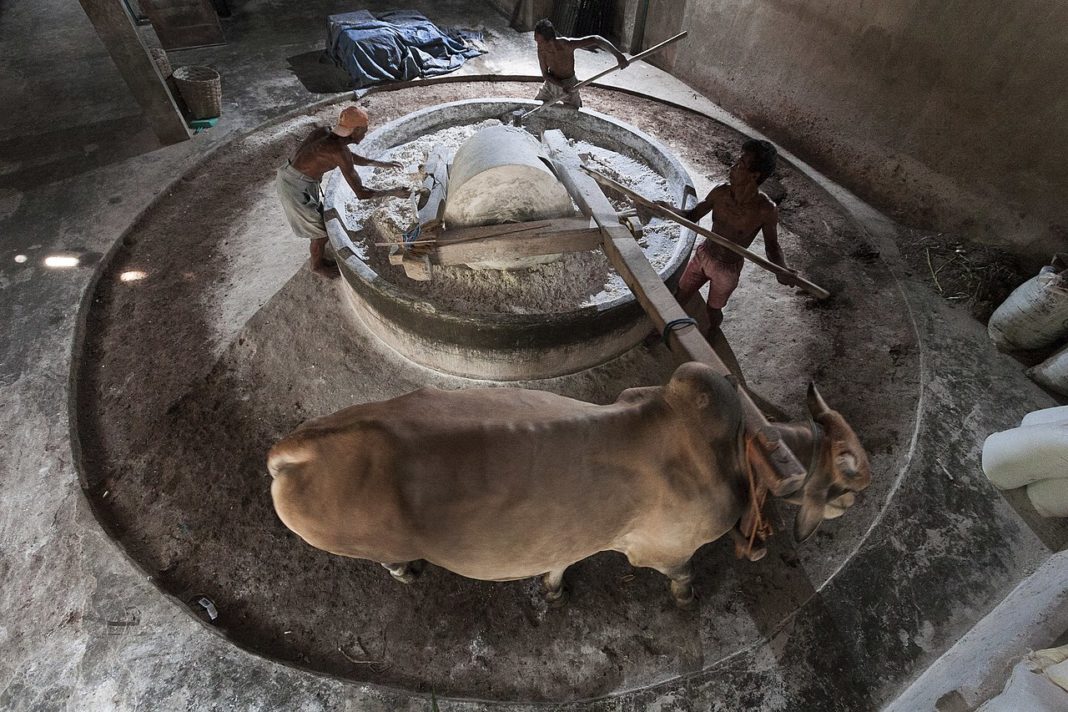In the small village of Srandakan in Yogyakarta, mie lethek noodles attract many tourists to enjoy because of its unique name and long history. Literally, “mie lethek” means “ugly” or “dirty” noodles. The main ingredients to make these traditional Indonesian noodles are cassava and sweet potato flour. In particular, cassava resin is still attached to each fiber, not washed, so instead of pure white like common noodles, dirty mie lethek noodles have a light brown color.
Although “dirty”, the noodles have a delicate sweet potato flavor and chewy texture, making many diners excited to eat.
Traditionally, this Indonesian noodle dish is handmade with cows and workers without any machines. Most of them are middle-aged to elderly. All have the same opportunity to work and not worry about being laid off or retired.
 Mie lethek noodles are often serve either fried or boiled, with eggs, chicken, vegetables, garlic, and candlenuts—an oily nut with a flavor similar to macadamia nuts – they are known to be delicious and healthy because there are no additives and food colorings.
Mie lethek noodles are often serve either fried or boiled, with eggs, chicken, vegetables, garlic, and candlenuts—an oily nut with a flavor similar to macadamia nuts – they are known to be delicious and healthy because there are no additives and food colorings.
Yasir Feri, the current owner of Mie Lethek Garuda, credits his grandfather with the invention of these noodles. Currently, the factory has about 30 local workers involved in the noodle making process, including the current owner.
Eighty years and two generations later, the younger Feri is the last producer to continue making mie lethek by hand, cow and all. After grinding the cassava and sweet potato flour, factory workers mix it into dough, which they then manually press into noodle form. Then, workers steam the resulting noodles and dry them in the sun for at least a day before sending them to local markets and for distribution throughout Yogyakarta.
You can come here to watch the making of this unique noodle dish and enjoy a bowl of mie lethek noodles near the factory or anywhere in Yogyakarta.
According to atlasobscura.com














